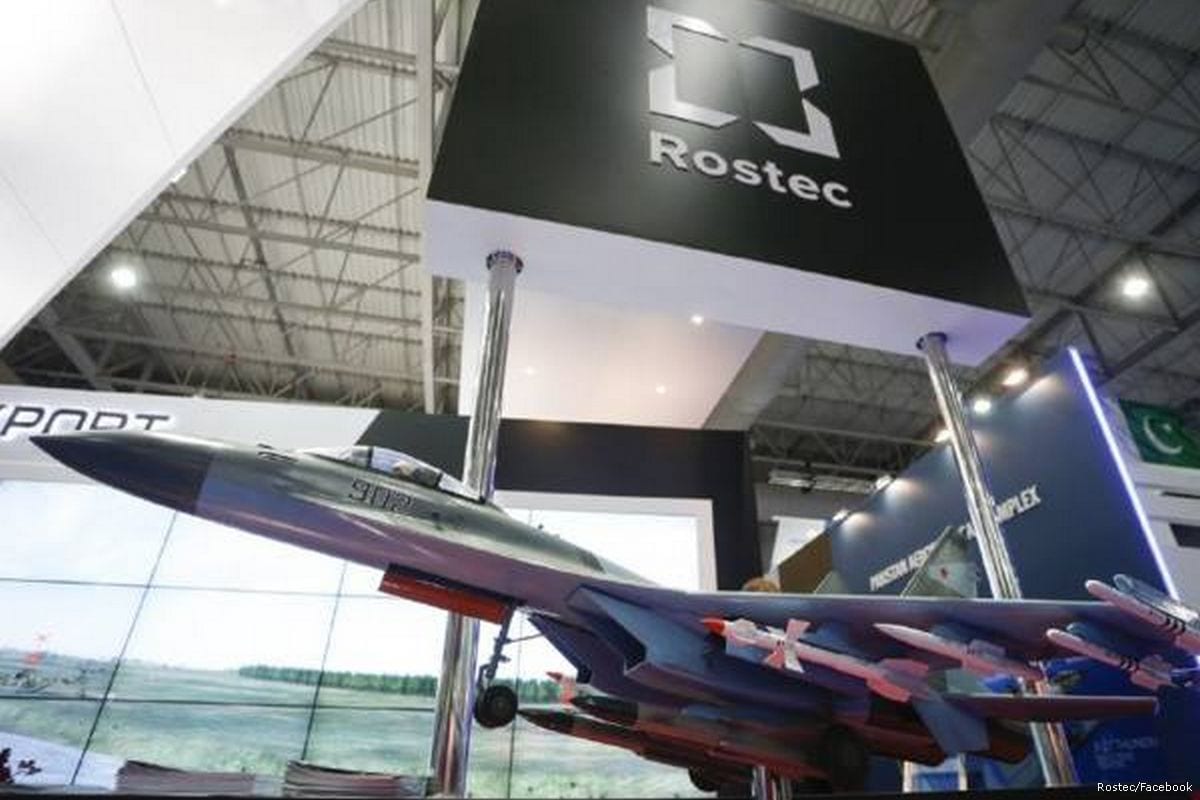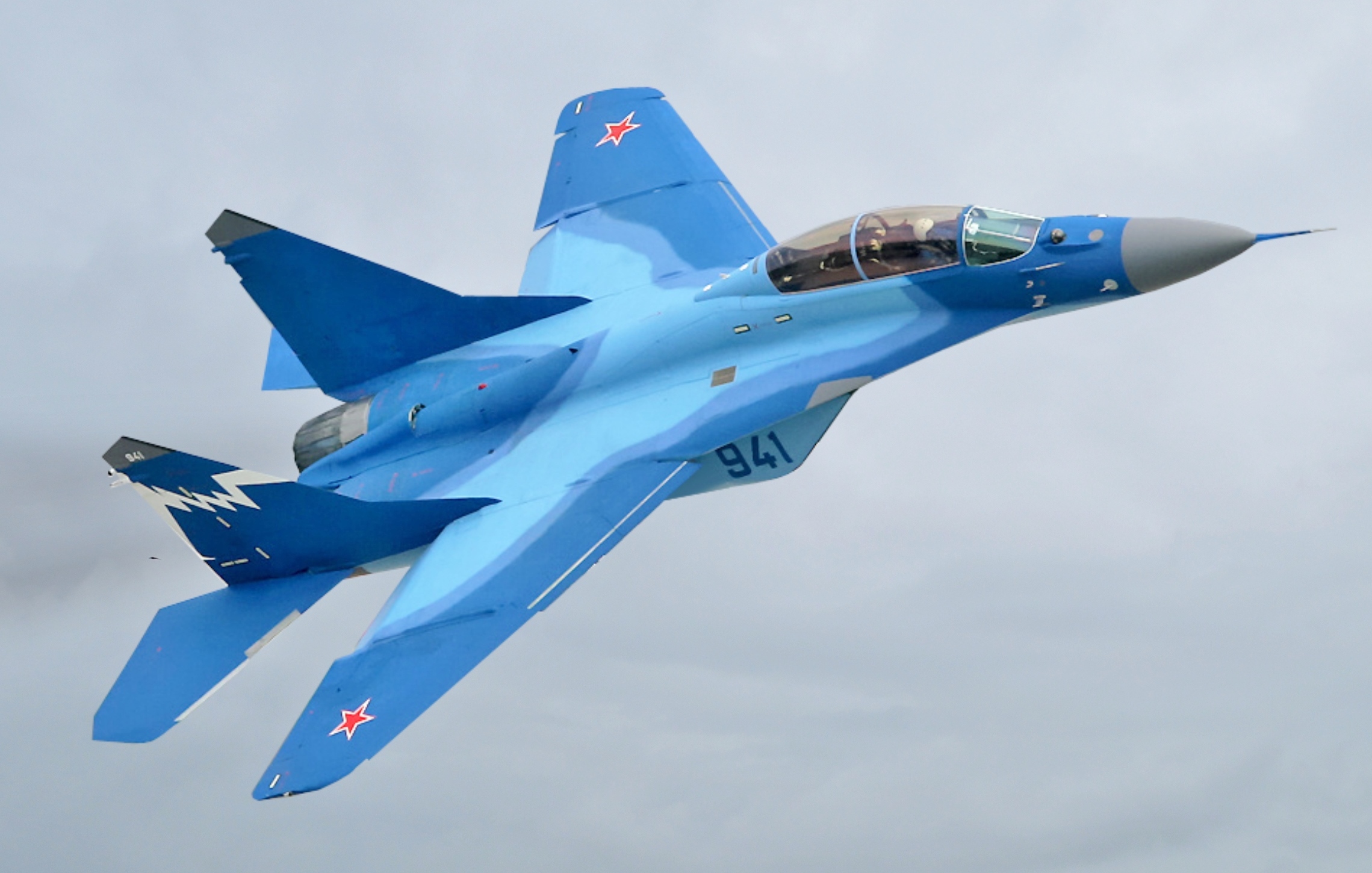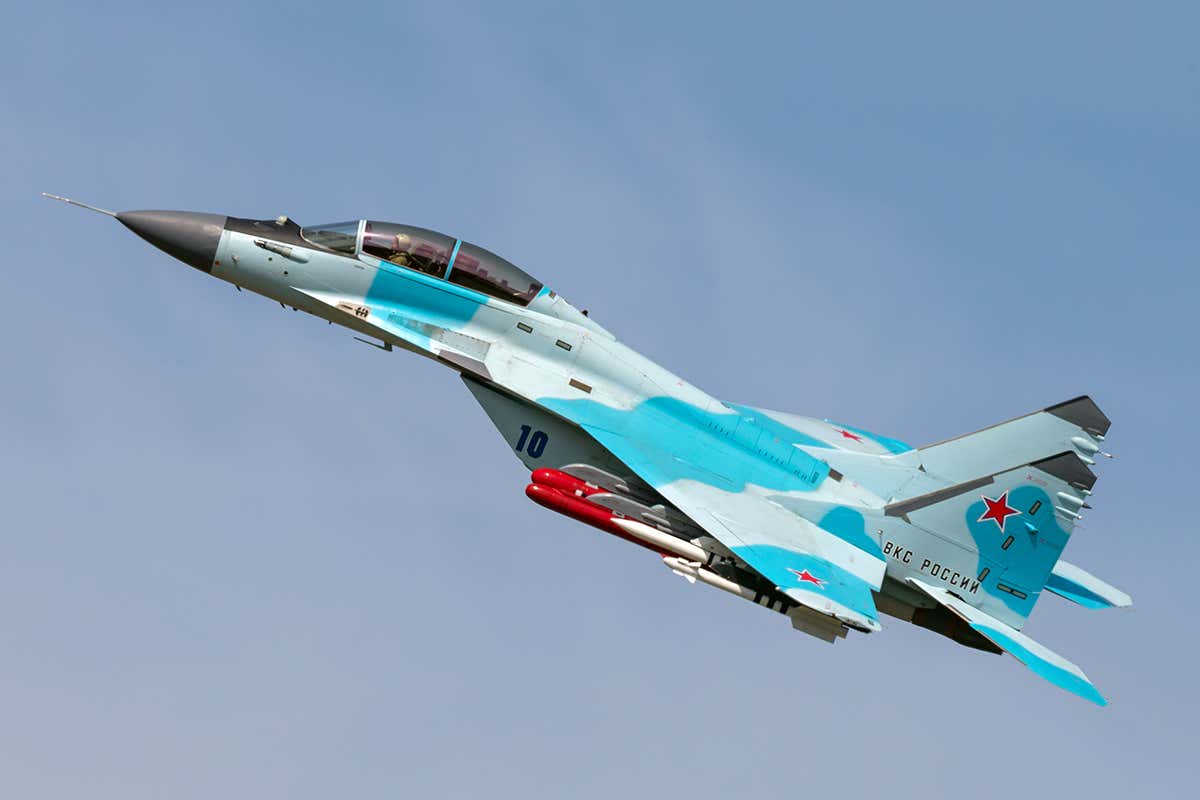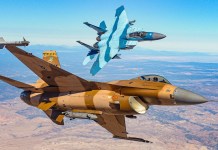Russia’s premier defense contractor Rostec is reportedly planning to build manned and unmanned variants of a single-engine lightweight fighter jet. However, analysts believe the project may not be successful in view of current market demands.
The development, however, signifies a major shift in the country’s fighter jet program, focussed mainly on two-engine jets unit now.
Russian news agency TASS reports that the Moscow-based Rostec State Corporation is currently “working on a concept” for the advanced “light and medium-class” advanced fighters to be built in both manned and unmanned versions.

While the current information on the project is considerably vague, it does indicate that the new fighters could be smaller than the present Flanker family, including the Sukhoi Su-27, Su-30, and even the Mikoyan MiG-29 and MiG-35 Fulcrum.
TASS quoted Sergei Chemezov, CEO of Rostec, while speaking about the project, as saying,
“Work is underway to develop a combat aviation system of the future in its light and medium classes. Under the design, this may be a universal platform in the manned and unmanned versions.”

As things stand, the project is still in the nascent stages and the firm is developing the concept on the basis of their own funding without support from the federal government.
“The company is working on the concept and the operational requirements for such a platform. We are doing this on our own initiative so far, without [federal] budget funds,” said Chemezov.
Currently, the fighter jet market is flooded with the highly popular fifth-generation US F-35 stealth and a host of other 4+ generation fighters. Russia has taken the competition to another level with its Su-35 and Su-57 fighters.
This has channelized most of its resources into building comparatively heavyweight fighters and therefore the concept of building a light, single-engine new-generation fighter is a relatively new idea.
The Russian Aircraft Corporation (RAC) has made efforts in the past to develop twin-engine new-generation fighters as lighter alternatives to the current fleet of heavyweight jets.
According to analysts, Mikoyan is considered the most likely candidate for the new light-weight fighter jet program, solely due to the fact that the aerospace firm had previously worked on the Lightweight Multifunctional Tactical Aircraft project, also known as the Logkiy Mnogofunktsionalnyi Frontovoi Samolyot (LMFS).
The Soviet-era LMFS project was to develop two complementary new fighter jets that would replace the MiG-29s.

However, following the collapse of the Soviet Union, LMFS was suspended and all single-engine fighter jets were withdrawn from the inventory.
The original LMFS fighter would have low-observable features including at least one internal weapons bay, which could have been retained on a single-engine variant.
While the program never saw the light of the day, the single-engine light-weight fighter jet could be built using the existing, advanced avionics suite from the MiG-35. This would enable the fighter to be equipped with the Zhuk-M radar, and other sensors.
Another hurdle is — while the off-the-shelf technologies could be integrated into a manned lightweight fighter jet, building an unmanned version will be really challenging.
Why China’s Highly Ambitious Brahmaputra Dam Endangers India-Bangladesh Relations?
According to Thomas Newdick, a writer with The Drive, at a time when modern fighter jets like MiG-35 have not done well in terms of global export, the success of a new light-weight fighter is highly doubtful.
Another reason why Russia doesn’t need to channelize its resources into building a light-weight single-engine fighter is that the country currently does not possess single-engine fighters left in its aerial ranks to replace.
However, if the country does have to embark on the journey of producing lightweight aircraft, the best chance is to develop fighters through foreign collaboration.
But then most countries including India, Turkey, South Korea, which seek to develop an advanced medium class fighter, have already begun building twin-engine fighters.
In addition, with the arrival of lightweight fighters like the JF-17, South Korea’s FA-50, and India’s very own Tejas Light combat fighter jet, the new Russian jet is likely to face stiff competition.




